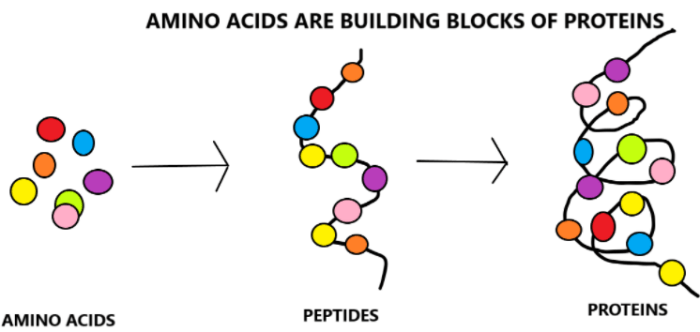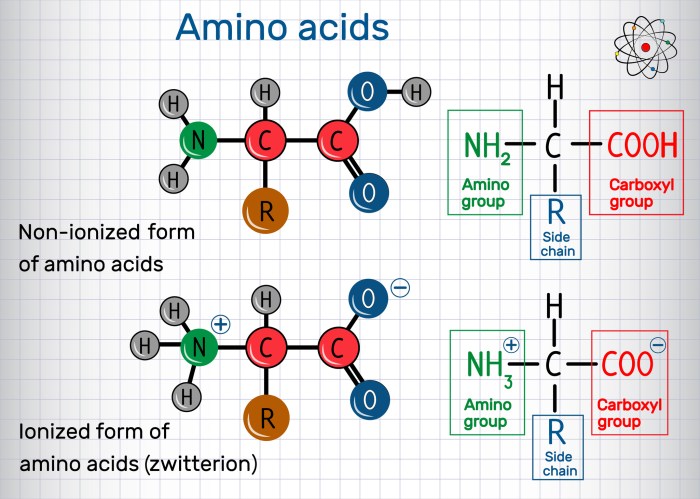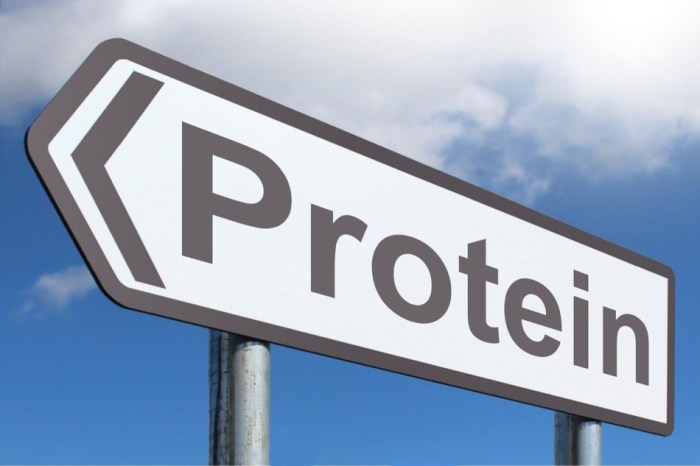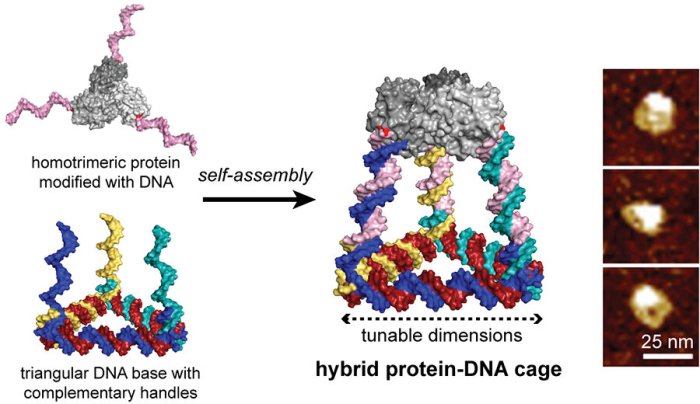Building blocks of protein abbr – Embark on a captivating journey into the fascinating world of proteins, where amino acids serve as the fundamental building blocks that shape their structure and function. From their chemical composition to their role in forming peptide bonds, this narrative delves into the intricate tapestry of proteins, revealing the secrets that underpin their diverse functions in biological systems.
As we unravel the complexities of protein structure, from primary to quaternary levels, we uncover the remarkable interplay between form and function. Discover how the intricate arrangement of amino acids dictates the specific roles that proteins play, enabling them to perform a vast array of tasks essential for life.
Peptide Bonds

Peptide bonds are the chemical bonds that link amino acids together to form proteins. They are formed between the amino group of one amino acid and the carboxyl group of another amino acid.
The formation of a peptide bond is a condensation reaction, which means that water is released as a byproduct. The reaction is catalyzed by enzymes called peptidases.
Types of Peptide Bonds
There are two main types of peptide bonds:
- Cis peptide bondsare formed when the amino group and the carboxyl group of the two amino acids are on the same side of the peptide bond.
- Trans peptide bondsare formed when the amino group and the carboxyl group of the two amino acids are on opposite sides of the peptide bond.
Trans peptide bonds are the most common type of peptide bond in proteins.
Protein Structure

Proteins exhibit a complex hierarchical organization, with their structure classified into four distinct levels: primary, secondary, tertiary, and quaternary. Each level of protein structure contributes to the overall function and stability of the protein molecule.
- Primary Structure: The primary structure of a protein refers to the linear sequence of amino acids linked by peptide bonds. It is determined by the genetic code and establishes the fundamental building block of the protein.
- Secondary Structure: The secondary structure of a protein arises from the formation of regular, repeating patterns within the polypeptide chain. These patterns include alpha-helices and beta-sheets, which are stabilized by hydrogen bonds between the backbone atoms of the amino acids. The secondary structure provides the protein with its initial three-dimensional shape.
- Tertiary Structure: The tertiary structure of a protein represents the further folding of the polypeptide chain into a compact, functional conformation. This folding is driven by various forces, including hydrophobic interactions, hydrophilic interactions, disulfide bond formation, and electrostatic interactions. The tertiary structure defines the overall shape and specific function of the protein.
- Quaternary Structure: The quaternary structure of a protein involves the assembly of multiple polypeptide chains into a single functional unit. These subunits interact through various forces, including hydrophobic interactions, electrostatic interactions, and disulfide bond formation. The quaternary structure allows for the formation of large, complex protein complexes with specialized functions.
Understanding the different levels of protein structure is crucial for comprehending the relationship between a protein’s structure and its function. By deciphering the structural organization of proteins, scientists can gain insights into their biological roles and develop targeted therapies for various diseases.
Protein Function

Proteins are the workhorses of biological systems, performing a vast array of functions that are essential for life. Their diverse roles include structural support, catalysis of biochemical reactions, hormone regulation, immune response, and cell signaling.
The structure of a protein is intricately linked to its function. The unique arrangement of amino acids in a protein determines its shape and charge distribution, which in turn influence its interactions with other molecules and its ability to carry out its specific tasks.
The building blocks of proteins, known as amino acids, are essential for various bodily functions. For a deeper understanding of these components, refer to the unidad 2 lección 1 answer key , which provides comprehensive information on the structure and functions of amino acids.
By studying this resource, you can gain a solid foundation in the fundamentals of protein building blocks.
Examples of Protein Functions
- Structural proteins, such as collagen and keratin, provide strength and support to tissues.
- Enzymes, such as digestive enzymes and metabolic enzymes, catalyze chemical reactions within cells.
- Hormones, such as insulin and growth hormone, regulate various physiological processes.
- Antibodies, part of the immune system, recognize and neutralize foreign invaders.
- Receptors, such as hormone receptors, transmit signals from outside the cell to the inside.
Protein Synthesis: Building Blocks Of Protein Abbr

Protein synthesis is a crucial process in living organisms, responsible for creating the building blocks of proteins, which play vital roles in various cellular functions. It involves two main steps: transcription and translation.
Transcription
Transcription initiates in the nucleus, where the DNA serves as a template. A specific region of DNA, called a gene, is transcribed into a messenger RNA (mRNA) molecule. The mRNA carries the genetic information from the DNA to the cytoplasm, where protein synthesis occurs.
Translation
Translation takes place in the cytoplasm on ribosomes, which are cellular structures responsible for protein synthesis. The mRNA molecule binds to the ribosome, and transfer RNA (tRNA) molecules bring specific amino acids to the ribosome. The amino acids are linked together to form a polypeptide chain, which eventually folds into a functional protein.
Regulation of Protein Synthesis, Building blocks of protein abbr
Protein synthesis is tightly regulated to ensure that cells produce the correct proteins at the right time and in the right amounts. Various mechanisms, such as gene expression regulation, mRNA stability control, and protein degradation, contribute to this regulation.
FAQ Section
What are amino acids?
Amino acids are organic compounds that serve as the building blocks of proteins. They consist of an amino group, a carboxylic acid group, a side chain, and a central carbon atom.
What are peptide bonds?
Peptide bonds are covalent bonds that link amino acids together to form peptides and proteins. They are formed between the amino group of one amino acid and the carboxylic acid group of another.
What are the four levels of protein structure?
The four levels of protein structure are primary, secondary, tertiary, and quaternary. Primary structure refers to the sequence of amino acids in a protein, secondary structure refers to the folding of the polypeptide chain into regular patterns, tertiary structure refers to the three-dimensional arrangement of the polypeptide chain, and quaternary structure refers to the association of multiple polypeptide chains into a single functional unit.